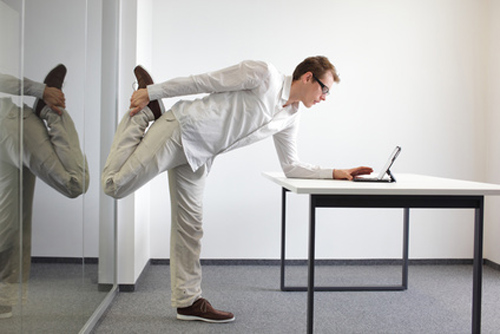A team of Swedish researchers reports that reducing sedentary activity appears to lengthen telomeres. The group’s finding is noteworthy because longevity and a healthy lifestyle have been linked to telomere length, but whether physical activity can make any difference is not clear.
The scientists have published a study (“Stand up for health—avoiding sedentary behaviour might lengthen your telomeres: secondary outcomes from a physical activity RCT in older people”) in the British Journal of Sports Medicine in which they analyzed the length of chromosomal telomeres in the blood cells of 49 predominantly sedentary and overweight people in their late 60s on two separate occasions six months apart.
All 49 participants had been part of a previously reported clinical trial in which half of them had been randomly assigned to a tailored exercise program over a period of six months, and half had been left to their own devices. Levels of physical activity were assessed using a seven-day diary and a pedometer to measure the number of footsteps taken every day, while the amount of time spent sitting down each day was gleaned through a validated questionnaire.
The time spent exercising as well as the number of steps taken daily increased significantly in the group following the exercise program, while the amount of time spent seated fell in both groups.
Various risk factors for heart disease and stroke also improved in both groups. But increases in physical activity seemed to have less of an impact than reductions in sitting time, the findings showed.
“Reduced sitting time was associated with telomere lengthening in blood cells in sedentary, overweight 68-year-old individuals participating in a six-month physical activity intervention trial,” wrote the investigators. “In many countries formal exercise may be increasing, but at the same time people spend more time sitting. There is growing concern that not only low physical activity…but probably also sitting and sedentary behavior is an important and new health hazard of our time.”
The research team, which is composed of scientists from Uppsala University, the Karolinska Institute, the Swedish School of Sport and Health Sciences, and Umeå University, admits that the study is small, and caution that it needs to be repeated in other larger groups, and in other tissues, such as skeletal muscle and fat cells.







